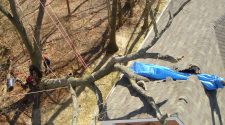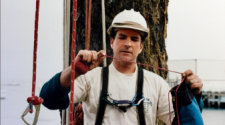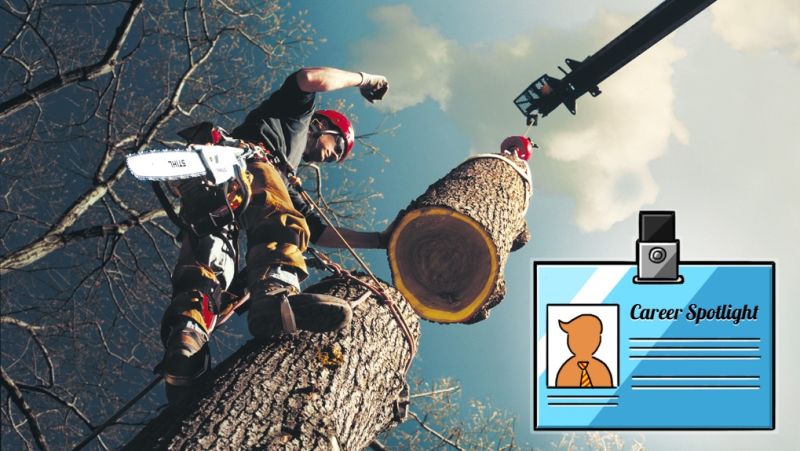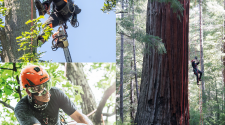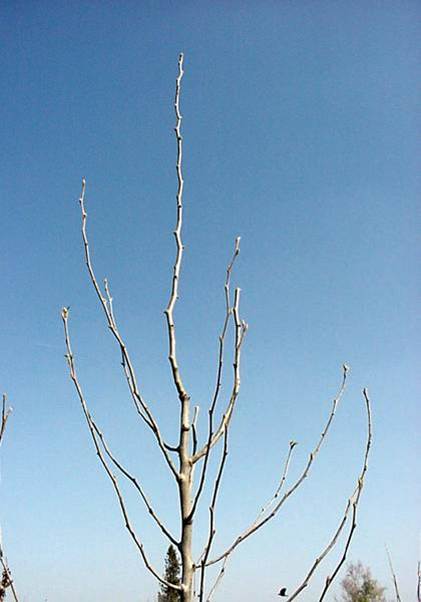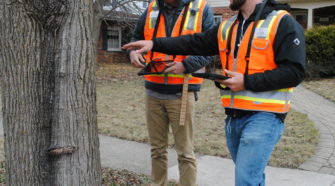Simple Lowerable Base Anchors
By Macintosh Swan CTSP
This article is going to explore two different stationary rope work positioning (SRWP) anchoring systems and my experience with them. These are not systems I created, just modified to fit my needs.
I am not going to get into the forces inherent in any climbing systems, but climbers should always be aware of how their chosen systems interface with the tree they plan to hang their life from. I am going to discuss why I choose to employ a climbing system anchored at ground level that can, in case of emergency, be operated by someone familiar with such systems to aid in lowering me to the ground.
When I began using SRWP, I employed canopy anchors more often than not. At first base anchors only seemed useful in situations where it was not easy to isolate a limb. But as I become more comfortable with SRWP it became apparent that the possibilities for base anchors far exceeded that narrow spectrum. Now, I employ base anchors almost every time I prune a tree, and will quite often begin full removals on a base anchored system. As with all things there are positives and negatives to a base anchored climbing line. A few of the things to keep in mind are:
- There are two legs of line supporting the climbers’ weight; be careful not to cut either.
- The climbers’ weight can be multiplied greatly at the primary support system (PSP), especially in the case of a fall.
- Be sure to keep the climb line clear of any rigging operations.
|
|
Okay, so that list is a little tongue in cheek, since most, if not all, of those could be applied to doubled rope (Ddrt) or canopy anchored SRWP systems as well. But here is my point; there are no more or fewer factors to keep in mind with a base anchor than with any other climbing system. There are simply different ways to manage the inherent risks of climbing up a rope into a large plant to work with sharp edged tools. In my eyes the only thing that is augmented by the base anchored system is the possibility for rescue from the ground.
I had been experimenting with base anchors that would allow my ground crew to lower me in an emergency. I was always somewhat behind on making sure everyone on the crew knew how to operate my systems though. And the company would experience turnover, so there were people who knew nothing about what I was using. Depending on the day it didn’t matter what I set up because the person with me on the ground would have no idea what I was climbing on.
Then, last summer I met someone at a TCC (tree climbing comp). Later in the year I heard that this individual had been hurt pretty badly in a fall during an attempted base anchor rescue. This woke me up. What was the point of setting up this measure of safety if I didn’t explain its use to my crew and impress upon them its usefulness?
The first step was to utilize the simplest systems I could make. This led me to streamlining the system I had been using already. As well as finding an even simpler method for situations where, in the past, setting up a lowerable anchor would have seemed too time consuming.
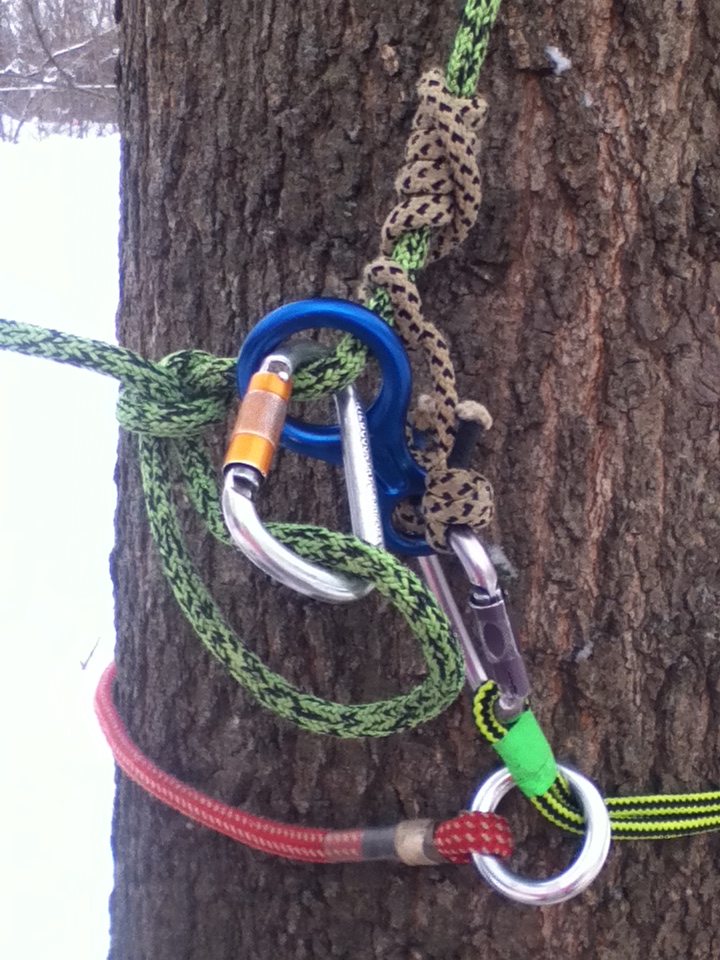
This is the first lowerable anchor I gleaned from Treebuzz and personalized. The anchor (the red and white rope, with yellow and black adjustable prussic) cinches around the anchor point. A friction hitch attaches the line to the anchor; friction is then added below it in the form of a “stitch plate” created by passing a bight of the line through a figure 8 and capturing it with a karabiner. I then finish it by tying a slip knot in my line and attaching it to the same karabiner that forms the stitch plate. The slip knot cannot be pulled tighter from above, and it serves as a fail/safe for any slipping in the friction hitch system.
In a rescue situation, all the rescuer has to do is open the stitch plate karabiner, take the slip knot out of it, let the karabiner close, pull the tail of the slip to untie it, then lower the climber by manipulating the friction hitch. What I appreciate about this system is that there are few actions for the rescuer to remember (open a karabiner and untie a slip knot), and the friction hitch is a simple operational concept, one that most tree crew members are probably familiar with.
The anchor I now use most frequently is another that has been adopted and adapted to fit my needs and the gear that I had on hand. It is formed by taking multiple wraps around the anchor point with the climb line, then passing a bight up between the wraps and the trunk, tying a midline knot, and attaching it to the anchor leg of the line with a steel quick link. The wraps tighten on the bight which tends to hang loose from the quick link, enabling a rescuer to get the quick link opened and disengaged with relative ease. The knot is then untied, the bight is pulled out from under the wraps and the climber can be lowered. This system, while technically not fail safe can be made virtually so through the addition of wraps on the trunk.
I have climbed on both of these systems extensively, have fallen into them, and been lowered on them from the ground in rescue practice. I have run my line through multiple redirects imposing a large amount of friction on the rope and still been able to reach the ground. However, it may not always be possible for the climber to be lowered if the rope is through multiple redirects, depending on the style of the redirects (static, semi-static), as well as the individual tree and its branch structure and bark texture. It would also not be possible to lower a climber who is secured by a positioning lanyard to a part of the tree structure, but is unable to release the lanyard for some reason. Even the tree structure itself could impede the lowering of a climber who is unable to navigate it themselves. These would be factors to be considered closely before attempting to rescue a climber from the ground. In these cases it is possible that a lowerable base anchor could still make for an easier rescue, with an aerial rescuer simply facilitating the lowering of the victim.
Ensuring there is enough rope in an anchor system to allow for the lowering of a climber is one of the easiest things to overlook, and should be the first thing you are certain of before setting up a lowerable base anchor. There is no point taking the time if you are going to run out of rope before touchdown. The obvious answer is a very long piece of the finest kernmantle that money can buy. That is unfortunately not always an option. Even a 200’ rope can seem to disappear quickly once you start setting redirects. So my solution is to connect two ropes together via a steel quick link. The most useful shape of quick link being the oval “chain” link variety, as it has the slimmest profile and is most likely to slide through a branch union.
In the cinching anchor system the two ropes would be connected just above the friction hitch so the climber would have the maximum amount of rope to be lowered with. This also maximizes the distance between the quick link and the first branch union
.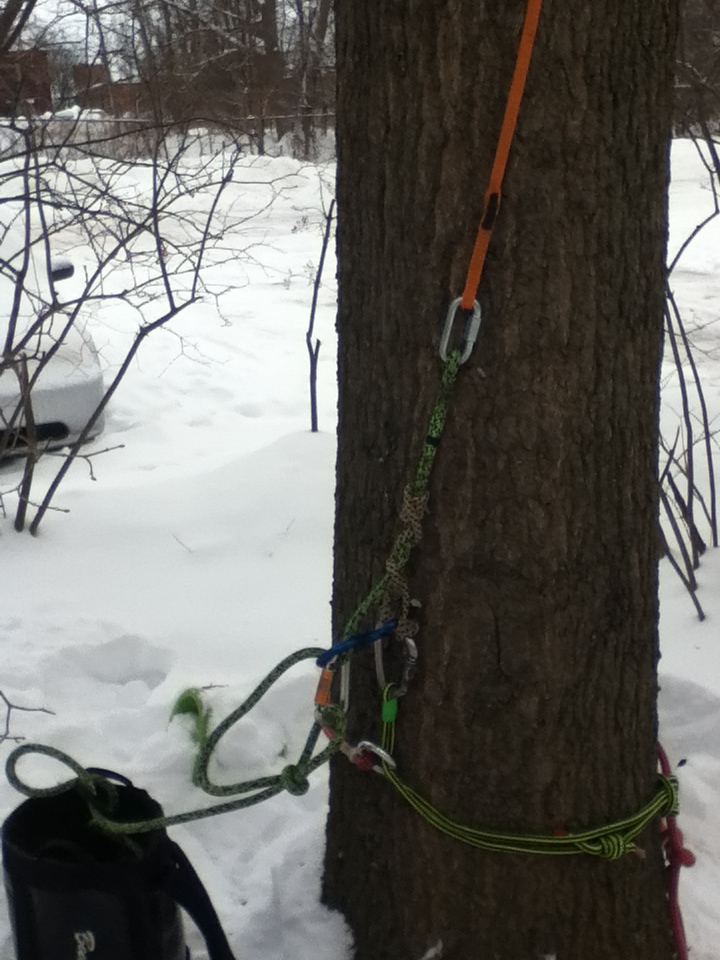
In the trunk wrap system the two ropes can be connected below the wraps on the tail of the bight. Or above the wraps, as in this picture, just past the delta link, again to maximize possible distances for lowering, and give the climber plenty of working end.
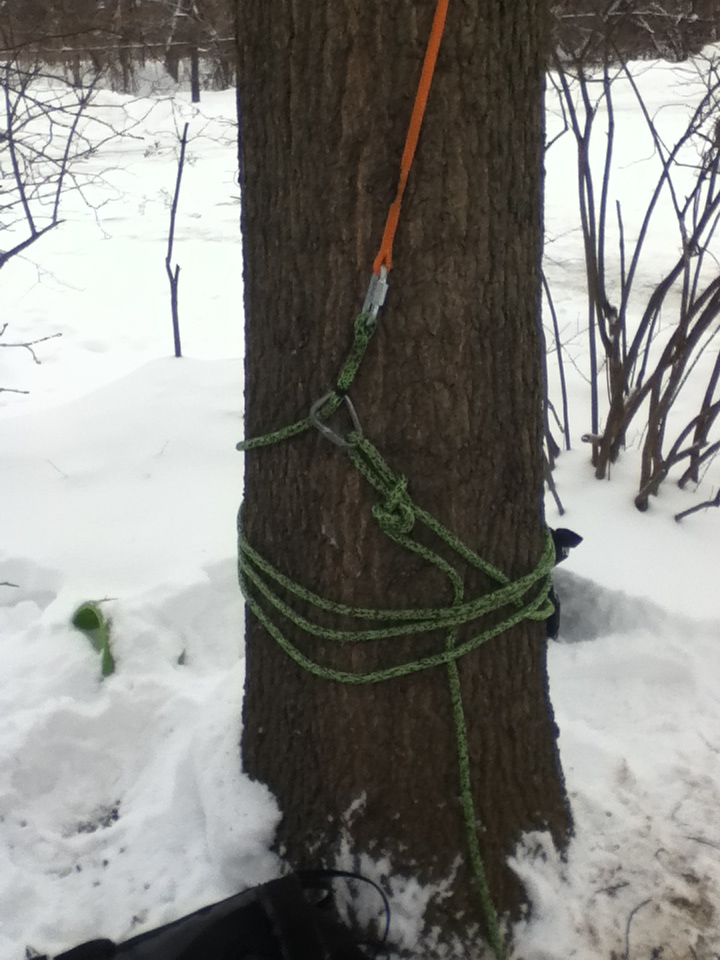
Another option for either of these situations is to have the quick link on the working side of the PSP so that the only obstacles would be any redirects the climber has set.
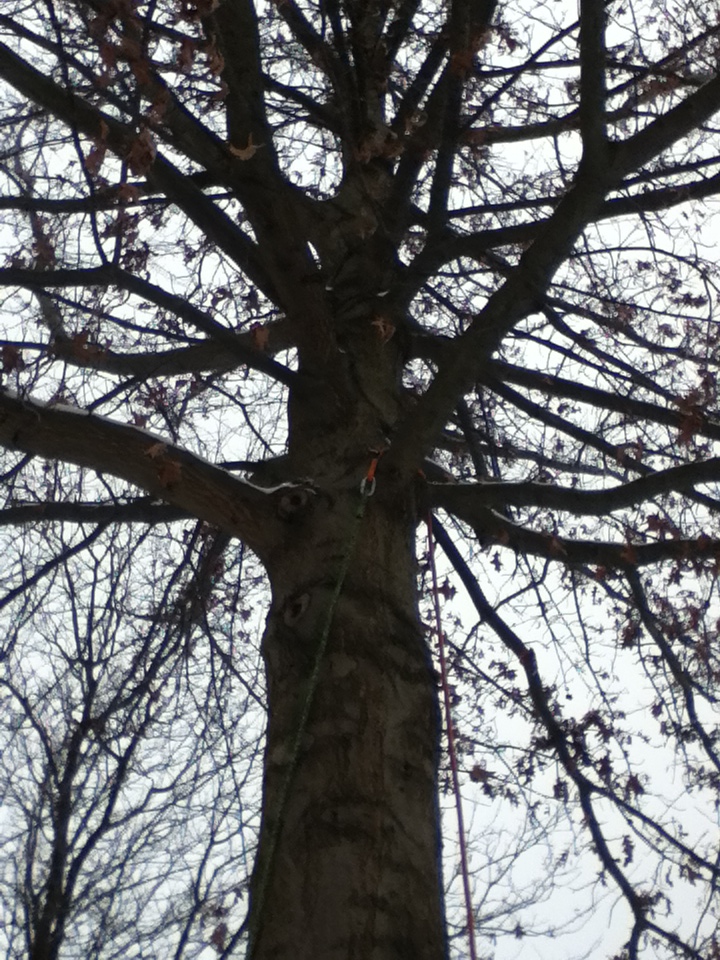
The two systems I have highlighted here are simply that. Two possible systems, which are infinitely adjustable to your climbing style and available gear, if you have a rated, appropriate belay device, you may want to skip the friction hitch and just set that on a cinching anchor. There are numerous ways to anchor your line with trunk wraps, this one just works really well for me. The end goal is not which system you wind up using, just that you consider using some sort of lowerable system, so that you the climber have more options to ensure your safety. Remember that everyone on the crew needs to train thoroughly and review often. In an emergency, someone on the ground will be in a position to save your life, or make your situation significantly worse.
Have fun, climb safe, go home.
RISK MANAGEMENT IN A BASE ANCHORED SYSTEM · Be sure of the PSP you have chosen, that your line is set firmly, is free of obstructions, and will not shift suddenly. Do not climb on a rope over something that will not support your weight.
· If necessary set your base anchor on an adjacent tree to keep your anchor line away from your work.
· Keep track of the anchor leg of your rope at all times during your work.
· Be sure that your ground support is aware of your system, its placement, and the workings of its components.
· Be sure that there is enough rope underneath the anchor point to allow for a rescue from the ground




